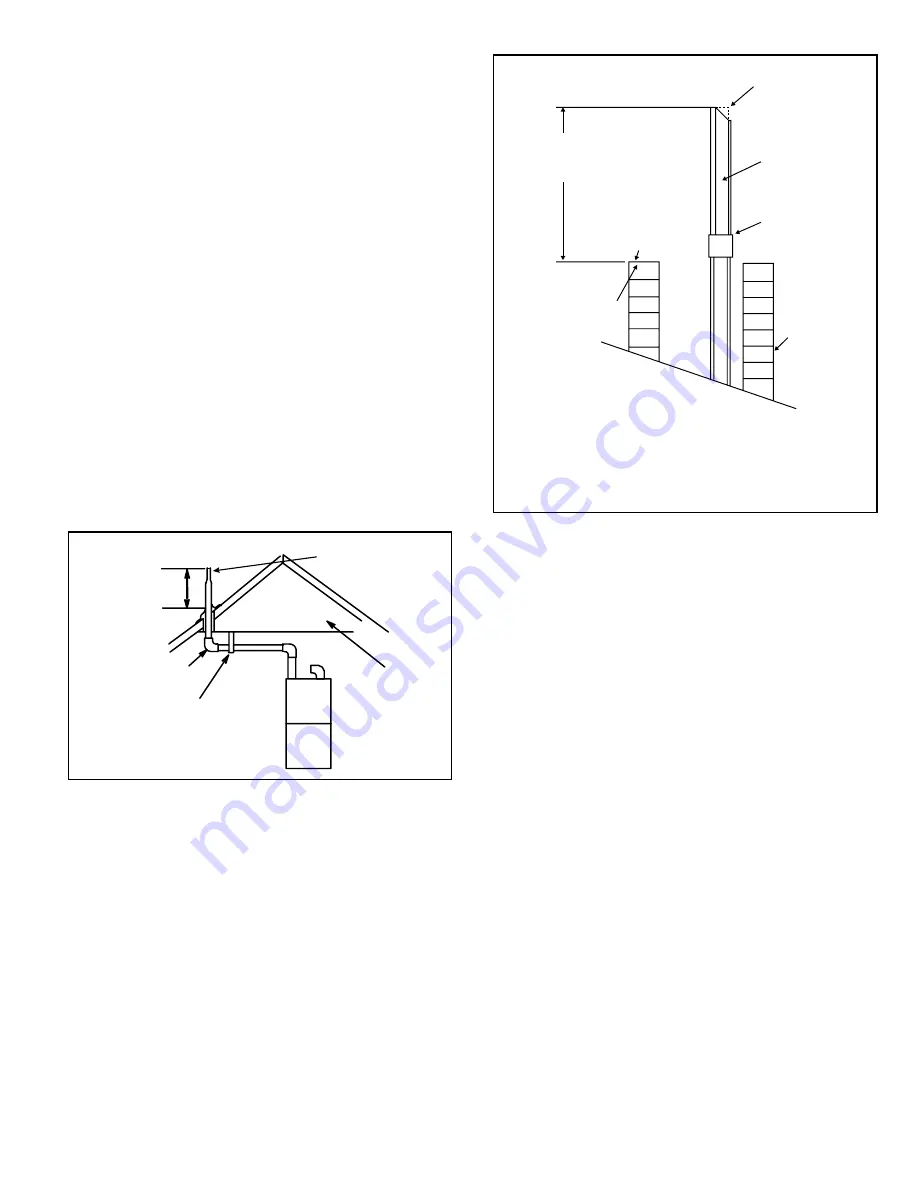
508134-01
Issue 2045
Page 34 of 53
Details of Exhaust Piping Terminations for Non-
Direct Vent Applications
Exhaust pipes may be routed either horizontally through
an outside wall or vertically through the roof. In attic or
closet installations, vertical termination through the roof
is preferred. Figure 38 through Figure 39 show typical
terminations.
1.
Exhaust piping must terminate straight out or up as
shown. The termination pipe must be sized as listed
in Table 13. The specified pipe size ensures proper
velocity required to move the exhaust gases away
from the building.
2.
On field supplied terminations for side wall exit,
exhaust piping may extend a maximum of 12 inches
(305mm) for 2” PVC and 20 inches (508mm) for 3”
(76mm) PVC beyond the outside wall.
3.
If exhaust piping must be run up a side wall to position
above snow accumulation or other obstructions, piping
must be supported every 24 inches (610mm). When
exhaust piping must be run up an outside wall, any
reduction in exhaust pipe size must be done after the
final elbow.
4.
Distance between exhaust pipe terminations on
multiple furnaces must meet local codes.
Figure 38. Non-Direct Vent Roof Termination Kit
15F75 or 44J41)
UNCONDITIONED
ATTIC SPACE
3” (76MM) OR
2” (51MM) PVC
PROVIDE SUPPORT
FOR EXHAUST LINES
12” (305MM)
ABOVE AVE.
SNOW
ACCUMULATION
SIZE PER EXHAUST PIPE
TERMINATION SIZE
REDUCTION TABLE
Figure 39.
Non-Direct Vent Application Using Existing
Chimney
STRAIGHT-CUT OR
ANGLE-CUT IN DIRECTION
OF ROOF SLOPE *
EXHAUST VENT
1/2” (13mm)
WEATHERPROOF
INSULATION
SHOULDER OF FITTINGS
PROVIDE SUPPORT
OF PIPE ON TOP PLATE
INTAKE PIPE
INSULATION (optional)
EXTERIOR
PORTION OF
CHIMNEY
INSULATE
TO FORM
SEAL
SHEET
METAL TOP
PLATE
* SIZE TERMINATION PIPE PER EXHAUST
PIPE TERMINATION SIZE REDUCTION TABLE
Minimum 12” (305mm)
above chimney top
plate or average snow
accumulation
NOTE
− Do not discharge exhaust gases directly into any chimney
or vent stack. If vertical discharge through an existing unused
chimney or stack is required, insert piping inside chimney until the
pipe open end is above top of chimney and terminate as illustrated.
In any exterior portion of chimney, the exhaust vent must be
insulated.
















































